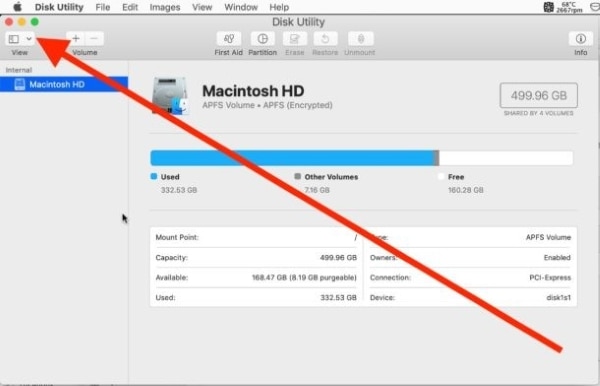
- #Use external ssd as boot drive mac mac os
- #Use external ssd as boot drive mac full
- #Use external ssd as boot drive mac download
#Use external ssd as boot drive mac mac os
Q - " Connected an external SSD USB C with Mac OS and internet is really slow "Ī - There is no relationship between the USB-C SSD connected to the computer and the Internet Speed. On the original MAC OS HD internal drive it's 30MB and using the new external SSD it's only 5MB and using web pages is extremely slow.
#Use external ssd as boot drive mac full
First picture is a just after a clean format, second picture is 80% full drive but I've been deleting stuff off it so its technically full., 3rd image is disk utility showing I deleted EVERYTHING off (deleted not format), 4th is a speed test after showing that obviously my Mac not telling the SSD what is junk makes a difference.Connected an external SSD USB C with Mac OS and internet is really slow.

The set of images are collected from AmorphousDiskMark for a 240gb Sandisk SSD. I could always feel performance degradation so I would just format it and back to the races. Now that SSD's are cheap I use them for scratch disk and temp files via USB using a USB to SATA adaptor. While many people are perfectly happy with the results, personally I'm not a fan of USB SSD's for the OS or system files with a Mac due to lack trim and the amount of write amplification it causes. Conversely if your boot is 10-15 seconds than moving to a USB SSD will likely result is lower OS performance. Start up from an HDD is around 1 minute 30 seconds and you still have some time while everything is "settling in". Most of the OS resides on the SSD portion of the fusion already. You may find this article interesting/helpful: believes that Thunderbolt should be used for a faster connection and TRIM support. believes that TRIM functionality isn't critical and that using a less expensive USB drive works perfectly well. There seems to be two schools of thought on the TRIM issue. macOS does not support TRIM over USB but does over Thunderbolt, which is why people are recommending the use of Thunderbolt for external drives instead of USB. There is also something called TRIM, which is a process that cleans up unused blocks on an SSD. They are much faster than SATA SSDs, maybe 1,500 - 3,000 MB/s. NVMe SSDs look like a really long memory stick, and basically plug directly into a PCIe slot. These are ballpark numbers, I'm not an expert on drive speeds. They are faster than mechanical hard drives, maybe 500 MB/second as opposed to ~100 MB/s for a mechanical. SATA SSDs look like a mini hard drive and use the same connectors as hard drives. It is correct that the connection won't make things faster than the drive itself, but what you may not be aware of is that there are two different types of SSD drives. Not as fast as thunderbolt, but almost twice the speed of USB3.1 gen1.Īnd the cost is VERY reasonable for the additional speeds you'll get. This will give you read speeds up around the 850-900mbps range. Just click the button to open and "drop the drive inside". Put the drive into enclosure and set it up (same as above). Get a USB3.1 gen2 enclosure, such as this: Get a "bare" nvme blade drive (MUST be "nvme") VERY VERY fast (will far outperform ANY fusion drive), but these are considerably more $$$$. If you'd like more speed, you could get one of the these two solutions: When done, go to the startup disk pref pane and choose the SSD to be the boot drive Launch CCC and clone the contents of the internal to the new SSDĤ.

#Use external ssd as boot drive mac download
(CCC is FREE to download and use for 30 days)ģ. Connect new SSD and use Disk Utility to format it to Mac format (either HFS+ or APFS) IF your fusion drive isn't "too full" yet, and IF all the contents will fit onto the SSD, the fastest way to accomplish this is:ġ. You should get reads of about 430mbps and writes in the 350-375mbps range. USB-c SSD will make a fine external boot drive. Or you could buy a T5 for £170 but they perform very similar to a build at home variant. 1TB ssds can be had for £80 and a 3.1 usb c caddy £20 so £100 vs £420 for the X5.

Otherwise 550mb/s is more than adequate for 4k video and any other day to day task. Its only when you are exporting large video files or big transfers where it is noticeable and a bottle neck but really that more advanced. Boots are near identical, program launches are similar. Recently I bought a Thunderbay 6 from OWC and have a 1TB Samsung Evo 970+ M2 NVME over TB installed which runs 3000mb/s r/ws day to day use it feels almost the same as the 3.1 1tb budget SanDisk ultra 1TB I had before. Myself and others have had these set up for years with minimal differences in performance. In all honesty trim isn't the end of the world either. The X5 is 4 times the price and for most people the performance day to day wont be noticeable, 3000mb/s r/ws is great but way overkill for most people.Ī sata 3 ssd over USB 3.1 gen 2 is a cheap way to make you Mac feel infinitely more responsive. TBH for 90% of people a USB SSD is ideal.


 0 kommentar(er)
0 kommentar(er)
